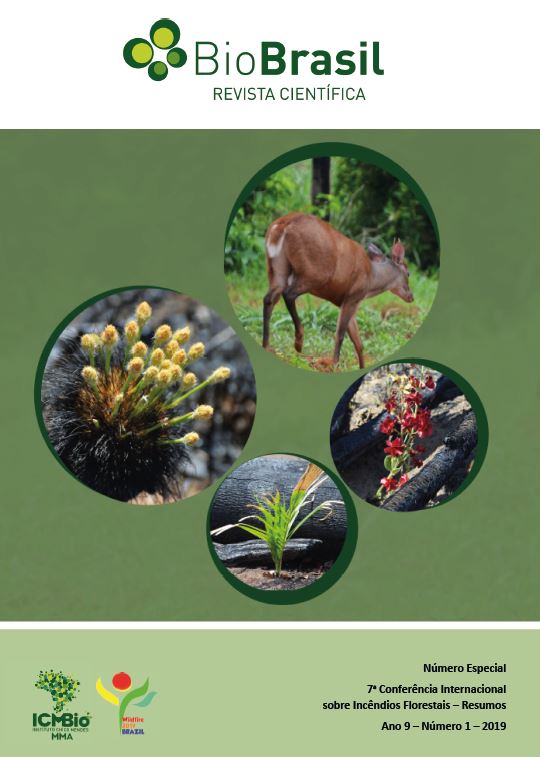Quercus suber L. Fire Responses According to Tree Characteristics and Fire Intensity in NE Spain
DOI:
https://doi.org/10.37002/biodiversidadebrasileira.v9i1.940Keywords:
cork oak, fire, mortality, Quercus suber L., resproutingAbstract
Quercus suber L (QS) resprouts as a key response to fire disturbance. It is well known that the development of a thick bark, that performs a thermal insulation, is a remarkable adaptation of QS to wildland fires. We studied fire effects in QS in NE Spain. We search for what is the diameter size that ensures individuals survive and recover crown size in less than two years. Sampling was performed in 2012 in an area that offered different levels of fire behavior (i.e., low intensity and high intensity as reported by forest firefighters). Trees with old (older than 2006), major fire scars were rejected since they did not allow us to infer the fire effect from the 2006 fire properly. 240 individuals were classified into three groups: "Dead", "BB" (lost the crown foliage but resprouting from basal buds); and "KC" (those keeping crown foliage because either not very much damaged by fire or able to sprout from most branches; i.e., stem buds). Results show that, under low intensity fires (surface fire), tree mortality is zero for trees in diameter classes (DC) above 15cm and 16% in the DC=5 & 10cm. Additionally, more than 60% in these classes (DC=5 & 10cm) do resprout from stem buds (very fast crown recovery), 93% in DC=15, and 100% in DC=20 and over. Under high intensity (crown fire), the damage is more evident and mortalities are 79% (DC=5cm), 32% (DC=10), and 8.6% (all above DC=10). The thinner individuals (DC=5cm) were mostly unable to resprout from stem buds (only 6.9% did so), although resprouted from basal buds (13.8%). Resprouting from the crown (stem buds) increased as DC increased. The effect of surface fires is minor in productive classes (i.e., DC>20cm) when addressing survival, although bark damages imply an economic loss. Therefore, a managed understory (i.e., low fuel load) has limited or zero tree mortality under an eventual fire. When highintensity fire occurs, under frequent fire recurrence, the cork oak presence will tend to disappear due to the mortality of oak juveniles (small DCs), being replaced by a scrubland..
Downloads
Downloads
Published
Issue
Section
License
Copyright (c) 2021 Biodiversidade Brasileira - BioBrasil

This work is licensed under a Creative Commons Attribution-NonCommercial-NoDerivatives 4.0 International License.
Os artigos estão licenciados sob uma licença Creative Commons Atribuição-NãoComercial-SemDerivações 4.0 Internacional (CC BY-NC-ND 4.0). O acesso é livre e gratuito para download e leitura, ou seja, é permitido copiar e redistribuir o material em qualquer mídia ou formato.











